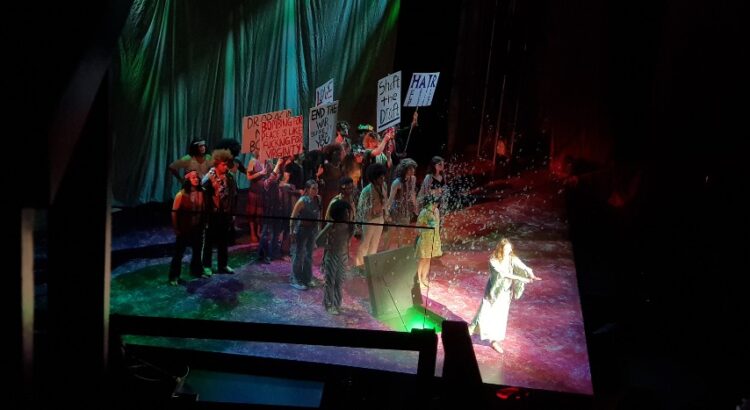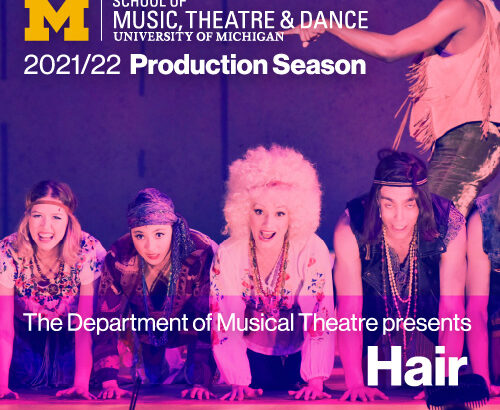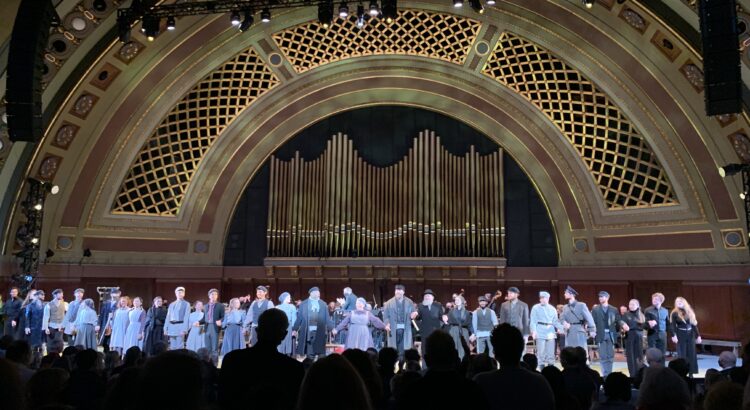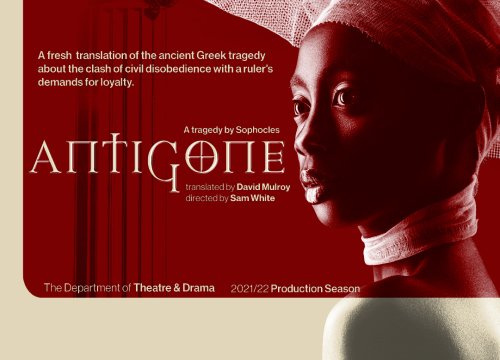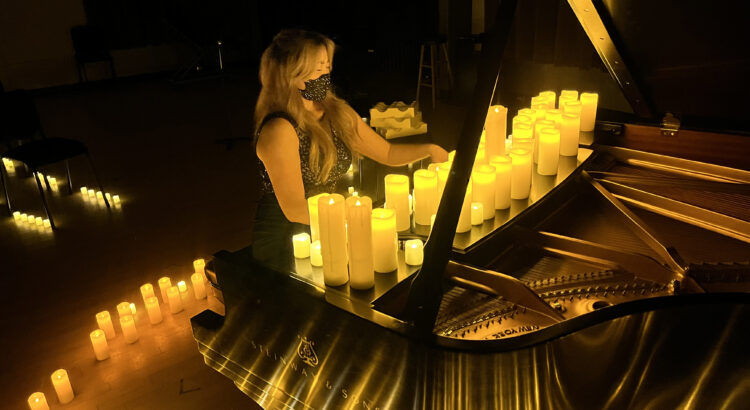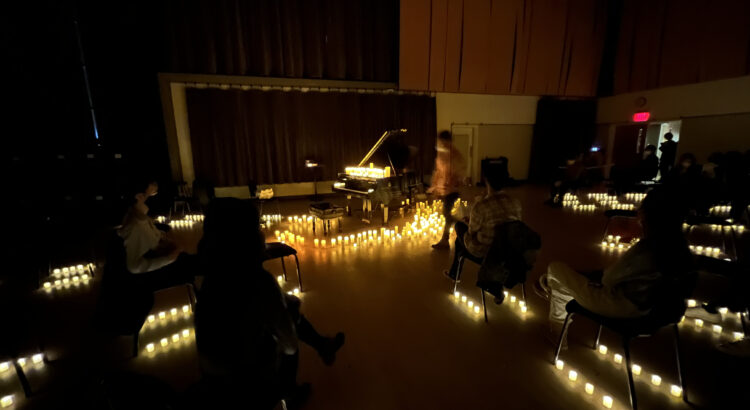I love the musicals where the ensemble comes out to perform multiple numbers. ‘Hair’ was one of the musicals where they made fantastic use of the whole cast. Colorful, wild, and energetic, ‘Hair’ was an exciting and dramatic performance. The actors’ wide-ranged, fast movements that filled the stage throughout the whole performance created the vibrant, dizzy, and youthful vibe that the hippie community (“tribe”) was sharing.
I also want to applaud the stage design and the set. While the actor’s vibrant moves were supposed to be the main part of the show, the set was there to back the actors up and make their moves even more dramatic. The colorful lighting design and stage set design served different purposes depending on the scenes. The orange/green colored one with squiggly patterns added to the vibrant energy of the show, while the skeleton concrete building which was the main structure of the stage design shifted from imaginary homes to a spotlighted platform for people that needed emphasis by the spotlight during Claude’s hallucination where George Washington, Abraham Lincoln, Scarlett O’Hara were introduced. The concrete-looking structure was designed neutrally enough to be perceived as a different location in each scene. It was a marker of space separation, which was highly necessary for this musical where the focus had to shift from one actor to another in a quick beat, and imagination and real-life interacted in the same space.
The most interesting moment for me was when Claude expressed his dilemma between his hippie identity and the call of the military after his hallucination. After he went through the hallucination passively, he, for the first time in the performance, got rid of the confidence of his hippie self and showed his vulnerability by being torn between his faith and duty. The change was most dramatic when he listed all the ‘practical’ and ‘proper’ job names such as lawyers and dentists. This is the part where he connected to being a real person in the performance, not a single-sided hippie-persona who is mercifully away from all the worries and woes of living. The actor playing this part made the change very clear.
Another interesting feature was how every actor nailed the expression of excitement and jolliness but added so much diversity to it. The people on stage felt like real people, not just people pretending to be constantly happy, which is impossible. If I ever get to see this performance again, I’ll be focusing on the actor’s expressions to catch the details of their actions.
Lastly, about the message: I think this musical spoke about how the ‘normality’ appraised by society could be dangerous. Through the dramatic contrast between the Hippie “tribe” ’s life and the ‘normal’ life of the audience, ‘Hair’ is speaking about how the dangerous concepts and urges could be appraised by being framed as ‘normal’.

